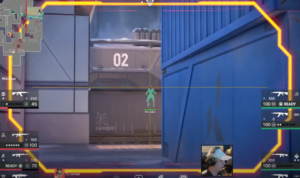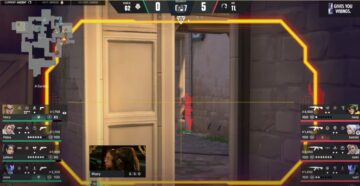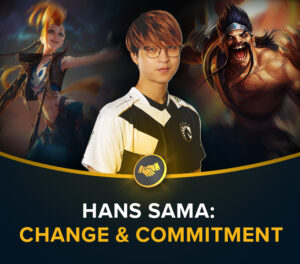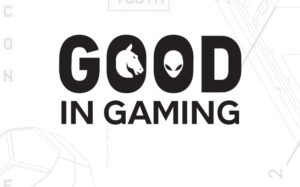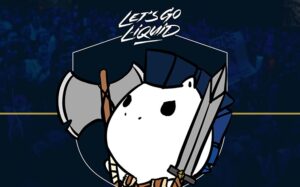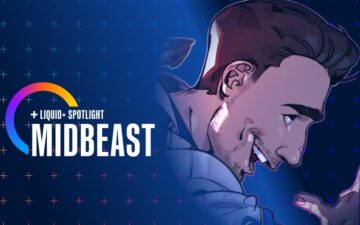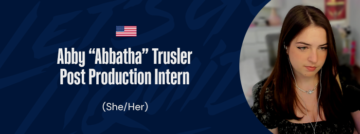There was a time not so long ago. An age when World of Warcraft guilds kept their kill videos squirreled away until enough other guilds had also killed the boss. An era when forums were how you found out who felled the final boss and got the World First. Then, five years ago, Method streamed the Race for World First — and that time ended. Nine raid tiers later, the Race has evolved into a spectacle unlike anything else in esports.
The Race has always been a group effort, requiring 20 dedicated raiders playing long hours at home, but in the new era, it’s ballooned into an enormous collaborative effort. Yes, there are still the 20 or so raiders, but when you factor in the analytics department, the production company, the casters, the chefs, and all the rest of the support staff, that number swells towards triple digits.
The RWF has become such a large communal effort that it’s not possible to encompass in one perspective. There are now many ways to be a part of the race, many layers to the raid.
JetJaguar had experienced his fair share of World First raiding before it became a production. He, Max, and Taggz founded Liquid (then known as Limit) Guild about eight years ago, where Jet had not only been a raider but a Guild Master. Now, Jet still works the Race as a commentator for Liquid Guild. (He still raids too, but no longer at the same hours or with the same goals.) Jet remembers the nascent days of the guild, and how much the Race, and Liquid’s role in it, evolved as the time went on.
“By the end of the expansion, we had become one of the best 10 guilds in the World, something we never expected would happen so quickly,” he explained. “We felt like the World First was within reach and we pushed ourselves even harder in Uldir, raiding all day, every day, until we eventually got second place. From there, the conversation immediately began [on] whether or not we were going to stream our progress in Battle of Dazar’alor.”
Maevey, one of the Race’s best healers, joined Liquid later on in 2018 in the months leading up to the Battle of Dazar’alor. Maevey would soon become a world-beating healer, but he was still new to the guild when it was making the call on whether or not to stream their race. In retrospect, Maevey was walking in on one of the RWF’s most important moments — and one of Liquid’s biggest discussions.
“There was a lot of contention as the guild weighed the pros and cons of streaming,” Maevey said. “Personally, even though we might have to stream for days, maybe even weeks, I thought it was an interesting opportunity. At the same time, I understood why people had reservations. Streaming […] would put us at a strategic disadvantage. If we got ahead, other guilds would get to copy what we’ve already done, which would make it a lot harder to maintain the lead.”
As dangerous as it was for the top guilds to broadcast their strategies to the world, the era of streaming quickly made up for any strategic downsides. After the success of the first streamed tier, the RWF would become a full-fledged esports product in a way that it never had been, and that brought the raiders the resources needed to optimize the race. Maevey lived these optimizations, watching them all roll in, year after year. And from his perspective, from the layer of the raider, it’s made life a lot simpler.
“In some respects,” the healer notes, “World First raiding is easier than ever.”
Easier (and bigger) than ever
For a raider like Maevey, one of the biggest optimizations came outside of the game. The sponsorships and resources that came with broadcasting would allow the raiders to travel and play together, in the same location for the first time in the Guild’s history. When the entire roster raided from their homes, simple logistic issues cropped up with remarkable frequency. It was too much to expect 20 people in 20 places, all of whom have different habits and sleep schedules, to act with complete synchronicity. Put everyone together, though, and it gets a lot easier to sync up.
“As silly as it sounds, scheduling meals and organizing breaks were two of the main impediments raiders faced when everyone was at home. It’s a real comfort to not have to worry about when I’m going to eat next or when I’ll be able to talk with the other members about something. Sleep management was another issue which still plague guilds who raid long hours, but with the infrastructure around us we’re able to create a schedule that lets us raid effectively and efficiently no matter how long the race lasts.”
Of course, the broadcast era also brought plenty of optimizations towards the game itself. A game like WoW comes with a sea of mechanics, timers, items, classes, combinations, and optimizations and with the professionalization of the RWF comes professional analysts to help navigate those waters.
“We have a team of experts who can aid us with anything that comes our way. We have people handling weak auras, while someone else is running sims so we can allocate loot in the best manner possible. This infrastructure has helped us greatly with communication as well. We used to use voice chat to convey information to one another, whereas now we have text channels where we can look at diagrams or refer back to the update if we want to check it out on our own time.”
“The [support staff] working with us are some of the best in the world when it comes to these tasks,” Maevey said. “I’m able to play better since I don’t have to worry about anything going on around me. All the work we used to have to do in the middle of a raid or during a break? It’s all being taken care of by some of the most capable people out there. Say someone in the raid notices something about a mechanic or a timer. During our breaks we can pass that information on to analysts who can figure out how we’re supposed to deal with that or how we could avoid it. It allows us to revamp or revise strategies at a pace that was never before possible.”
[embedded content]
By the time the analysts and specialists came in, Jet had stepped away from raiding. However, he still joins the Guild as they all gather in one location. The only difference is that instead of manning a keyboard and mouse, he is in front of a camera. With the streaming era well under way, a successful race now also demands a successful broadcast.
“It takes a lot of people to cast something on the scale of the Race for World First,” Jet said. “Each person has their own insight to add, but there are areas where we’re not as knowledgeable as well. My background as a World First raider, who remains in close contact with the guild, makes it a lot easier for me to break down and explain some of the more technical aspects of the race — the sort of things that even a highly educated WoW players might miss and struggle to explain so concisely. That overlap allows us to present the race in a way where viewers with all sorts of various experiences and interests can be kept abreast of what’s going on in the game, while also being entertained.”
And while Jet didn’t get to reap the benefits of the analysts as a raider, he can still feel the RWF improving from behind the caster desk. A lot of his support comes from Waveform — the production company that helps create Liquid Guild’s broadcast.
“From a production standpoint, Waveform does an excellent job,” he stated. “We’re able to interface with them and share ideas about how to improve the race. One of the biggest issues with World of Warcraft, from a viewer perspective, is that the UI [user interface] changes from player to player. Two players can have the same information on their screen, but it can be displayed in wildly different places. Production has been essential in creating a uniform style that is more pleasing to our audience.
“From a caster perspective, it makes our lives easier as well. Knowing where to look to see how many battle [resurrections] or what defensives are available no matter whose UI we’re looking at, allows me to keep the pace in the play-by-play and be more informative so that viewers can have context beyond what’s happening on-screen at that moment.”
[embedded content]
That’s what’s interesting about the growth of the Race. Maevey and Jet are both on very different layers of the raid, with entirely different goals. But the two of them can each feel how the Race has grown, and can point to how it’s helped them do their jobs and grow their craft.
“Now that we have this ease of communication we can work together like never before,” Maevey said. “One player can ask another player of their class about the best way to maximize their casts despite a mechanic. Another could be discussing how best to utilize a cooldown. That’s one thing that has changed a lot. It used to be the job of a few specific people, but now we’re able to work more cohesively with one another. That means more opinions and more perspectives, which is ideal when you’re working with the fine margins that you encounter during the race.
“The people helping us are invaluable. They take care of everything, from making sure all of our characters are in the correct split to devising our loot system and ensuring everything goes to the right character. They’re constantly doing one task or another so that myself and raiders can focus entirely on the game with the confidence that everything we need is going to be available to us.”
One community
That’s not to say that everything has gotten easier, though. As the RWF grows, it not only becomes more difficult to fund but it also becomes more difficult to communicate as it becomes less niche. The RWF has always been tough to comprehend, even when it was not that known beyond raiding circles. Now that it’s gaining traction and shine in wider gaming, reaching the entire audience is an even bigger battle.
[embedded content]
(Recently the RWF made it to Folding Ideas, a large YouTube channel. While the RWF was not the primary topic of the video, it also wasn’t an insignificant element.)
“Honestly, I think it’s really hard for your average viewer to keep up with every element of the Race,” he admitted. “If you’ve gone through the process yourself, you’ll understand everything, but if you haven’t, things are going to fall through the cracks.”
Tens of thousands of viewers watch the race, and they all have their own experiences with World of Warcraft. Jet’s knowledge of World First raiding is nearly unmatched. But, when casting, Jet knows that he needs to hold the attention of multiple people — like someone in a cutting edge guild, someone who has only done LFR, someone who has never raided — all at once.
An example of the challenge came up in the most recent Race as Jet found himself trying to explain an overly complex system that Blizzard had released with the latest patch.
“I spent a lot of time thinking about the best way to explain the new upgrade system,” he said. “The process isn’t all that intuitive until you do it yourself, which is why you lose a lot of people’s attention when you start going into the nuances and mentioning items like Flightstones and Enchanted Aspect’s Shadowflame Crests. It would be great if we could appeal to larger portions of our viewerbase, but that’s how WoW is. There are so many ways to play World of Warcraft that even when it comes to people who are watching the Race for World First, you can’t reach everyone the same way.”
Reaching the entire audience is tricky, to the point where even Blizzard has their thoughts on commentary. Thoughts that Jet doesn’t always agree with.
“Blizzard wants the casters on their official streams to use the official terminology for spells, mechanics, etc,” Jet said. “A lot of casters naturally adopt that style, but I think there’s a lot of value in generalization when it comes to appealing to a diverse player base. Every boss has their own abilities, but using them is confusing as they often sound really similar or are excessively complex. In comparison, everyone knows what I mean when I say ‘swirlie’, ‘cleave’, ‘fire’, and ‘soak’.” You can see fire and swirlies on the ground. You know when people are soaking because you see them cluster together. Combining visual cues with jargon makes it much easier on the viewer’s end.”
Given how hard the RWF is to grasp — hard even for its developers — it’s even more surprising in how much it grows. How does the Race keep getting traction, keep adding layers, when it’s so intractable? It’s hard to say for sure, but a likely answer is the sense of community and shared goal. Where other esports pit two teams against each other, the RWF is also pitting guilds against a boss — an AI. Even a first-time watcher can tune in to progression on a boss and understand the tension, the frustration, and the cheers when the boss finally goes down.
“The mood in the studio can be really infectious,” Jet said. “Myself and the other casters might not be playing, but we’re all part of the Race together. That anxious excitement you get when you’re close to killing a boss? We feel that too. I’ll never forget the end to the Race in Castle Nathria. We got to a point where Liquid and Echo were pulling the final boss at the same time. I was trying to be as informative as possible, while also capturing the majesty of that moment, but I found it difficult to speak. I was staring at the pair of monitors, too absorbed to properly explain everything that was happening. It was nice to experience that sensation from another perspective.”
Despite its hiccups, difficulties, or even losses, the Race is always a positive experience for Jet in no small part because of that community. He knows that everyone involved with the Race is pulling for Liquid to emerge victorious and united in that sense. But, even if they fail to do so, even if they lose the race, there’s still the joy of coming back to a community that lived long before the broadcast.
“The absolute best part of the race is seeing all of these friends that I wouldn’t otherwise be able to,” Jet said. “There’s a tangible sense of community among the people who are part of the race, regardless of their duty. Whether it’s the analysts feeding the raid information, the chefs cooking for everyone in the studio, the casters like myself, the production crew, and, of course, the raiders, we’re all working together to achieve the same goal.”
At the end of the day, the Race is about far more than clearing a raid, heading home, then doing the same six months later. The Race is about friendship — during times of joy and disappointment. It’s about enduring trials and coming out stronger on the other side. Over the years more and more staff have joined this effort. No matter their role, no matter their layer, they are a part of Liquid. Part of a community. And even though Jet believes that he’ll never be able to reach everybody equally, in the end, that’s okay.
“You don’t have to be a world first raider to feel your pulse quicken as the guild gets close to killing a boss,” he said. “You don’t have to understand the intricacies of each mechanic to appreciate the clever solutions Liquid figures out. You don’t even have to play WoW to get swept up in the torrent of emotion when the final boss dies and everyone screams in triumph. Strip away all the pageantry, the pomp and circumstance, and what do you have? 20 close friends having the time of their lives playing a video game together.”
Writer // Michael Eisenhauer
Graphics // Zack Kiesewetter
- SEO Powered Content & PR Distribution. Get Amplified Today.
- PlatoData.Network Vertical Generative Ai. Empower Yourself. Access Here.
- PlatoAiStream. Web3 Intelligence. Knowledge Amplified. Access Here.
- PlatoESG. Automotive / EVs, Carbon, CleanTech, Energy, Environment, Solar, Waste Management. Access Here.
- BlockOffsets. Modernizing Environmental Offset Ownership. Access Here.
- Source: https://www.teamliquid.com/news/2023/08/03/layers-of-raiding-jet-and-maevey
- 10
- 20
- 2018
- a
- abilities
- able
- About
- Absolute
- achieve
- act
- add
- adding
- admitted
- adopt
- after
- Against
- age
- ago
- ahead
- AI
- aid
- All
- allocate
- allow
- allows
- already
- also
- always
- among
- an
- analytics
- and
- Another
- answer
- any
- Anything
- appeal
- appreciate
- ARE
- areas
- around
- as
- aspects
- At
- attention
- audience
- available
- average
- avoid
- away
- back
- background
- base
- Battle
- BE
- became
- because
- become
- becomes
- been
- before
- began
- behind
- being
- believes
- benefits
- BEST
- Better
- beyond
- bigger
- Biggest
- Blizzard
- both
- break
- broadcast
- Broadcasting
- brought
- but
- by
- call
- came
- CAN
- capable
- capturing
- care
- casting
- challenge
- changed
- changes
- channel
- channels
- character
- characters
- Chefs
- class
- classes
- clearing
- close
- Collaborative
- combining
- comes
- comfort
- coming
- Commentary
- commentator
- communal
- communicate
- Communication
- community
- company
- comparison
- complete
- complex
- comprehend
- confidence
- confusing
- constantly
- contact
- content
- context
- Conversation
- cooking
- correct
- could
- course
- create
- Creating
- Credits
- Crew
- cutting
- dangerous
- day
- days
- deal
- dedicated
- demands
- department
- desk
- despite
- developers
- difference
- different
- difficult
- difficulties
- digits
- disappointment
- discussing
- discussions
- displayed
- diverse
- do
- Do It Yourself
- does
- doing
- done
- down
- During
- each
- ease
- easier
- eat
- echo
- Edge
- effectively
- efficiently
- effort
- element
- else
- embedded
- emerge
- encompass
- end
- enduring
- enough
- ensuring
- entire
- entirely
- equally
- era
- esports
- essential
- etc
- even
- eventually
- EVER
- Every
- everyone
- everything
- evolved
- Example
- excessively
- excitement
- expansion
- expect
- expected
- experience
- experienced
- Experiences
- experts
- explain
- explained
- faced
- factor
- Fail
- fair
- fall
- far
- feeding
- feel
- few
- Figure
- figures
- Final
- Finally
- fine
- Fire
- First
- first time
- Focus
- For
- forums
- founded
- Frequency
- Friends
- Friendship
- from
- front
- frustration
- fund
- gaining
- game
- Gaming
- gather
- Get
- getting
- goal
- Goals
- goes
- going
- gone
- grasp
- great
- Ground
- Group
- Grow
- grown
- grows
- Growth
- Guild
- had
- Handling
- Happening
- Hard
- harder
- has
- Have
- having
- he
- heading
- help
- helped
- helping
- helps
- highly
- his
- history
- hold
- Home
- homes
- hours
- How
- How To
- however
- HTTPS
- i
- ideas
- if
- immediately
- important
- improve
- improving
- in
- information
- informative
- Infrastructure
- insight
- instead
- interesting
- interests
- interface
- into
- intricacies
- intuitive
- invaluable
- involved
- Is
- issue
- issues
- IT
- items
- ITS
- itself
- jargon
- Job
- Jobs
- joined
- Joins
- keep
- kept
- Keyboard
- know
- knowledge
- known
- large
- larger
- later
- latest
- layer
- layers
- lead
- leading
- less
- Life
- like
- likely
- LIMIT
- Liquid
- Liquid Guild
- lives
- location
- Long
- longer
- Look
- looking
- lose
- losses
- lot
- made
- main
- maintain
- make
- MAKES
- Making
- management
- manner
- many
- margins
- master
- matter
- maybe
- me
- meals
- mean
- means
- Mechanics
- Members
- Method
- Middle
- might
- moment
- moments
- monitors
- months
- mood
- more
- most
- much
- multiple
- my
- nascent
- navigate
- nearly
- need
- needed
- needs
- never
- New
- Next
- Nice
- Niche
- Nine
- no
- not
- notes
- now
- number
- of
- official
- often
- Okay
- on
- once
- One
- only
- Opinions
- Opportunity
- optimize
- or
- organizing
- Other
- otherwise
- our
- ourselves
- out
- outside
- over
- own
- pace
- pair
- part
- pass
- Patch
- People
- perspective
- perspectives
- place
- places
- Plague
- plato
- plato data intelligence
- platodata
- platogaming
- play
- player
- players
- Playing
- Plenty
- Point
- Pomp
- Positive
- possible
- present
- primary
- Process
- Product
- Production
- professional
- Progress
- progression
- Pros
- pulling
- pulse
- pushed
- put
- quickly
- Race
- raid
- Raiders
- reach
- reaching
- Real
- really
- recent
- recently
- regardless
- released
- remains
- remarkable
- Resources
- REST
- right
- role
- Roll
- roster
- running
- s
- Said
- same
- say
- Scale
- Scheduling
- Screen
- SEA
- second
- see
- seeing
- sense
- Share
- shared
- shine
- side
- similar
- Simple
- simpler
- sims
- since
- SIX
- sleep
- small
- So
- Solutions
- some
- someone
- something
- Soon
- sound
- speak
- specialists
- specific
- split
- staff
- standpoint
- start
- stated
- still
- Strategic
- Strategies
- stream
- streaming
- streams
- Strip
- stronger
- studio
- style
- success
- successful
- such
- support
- sure
- surprising
- system
- Take
- taken
- takes
- talk
- task
- Team
- TeamLiquid
- teams
- Technical
- terminology
- text
- than
- that
- The
- The Game
- the world
- their
- Them
- then
- there
- These
- they
- thing
- things
- think
- Thinking
- this
- those
- though
- thought
- thousands
- Through
- tier
- time
- times
- to
- together
- too
- top
- topic
- Torrent
- tough
- towards
- traction
- travel
- trials
- two
- ui
- under
- Understand
- understood
- United
- unlike
- unmatched
- until
- up
- Update
- upgrade
- us
- use
- used
- User
- using
- utilize
- value
- various
- very
- victorious
- Video
- Videos
- viewers
- Voice
- voice chat
- walking
- want
- wants
- Warcraft
- was
- Watch
- watching
- Waters
- way
- ways
- we
- weeks
- well
- went
- were
- What
- when
- where
- whereas
- whether
- while
- WHO
- whose
- why
- wider
- with
- within
- Work
- working
- works
- world
- World of Warcraft
- worry
- would
- WoW
- year
- years
- yes
- you
- your
- yourself
- youtube
- zephyrnet


